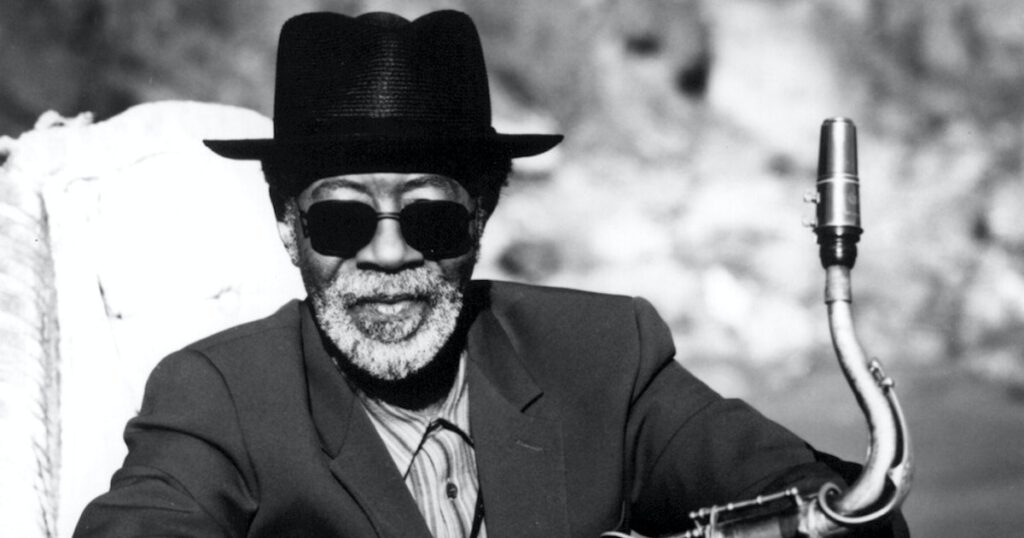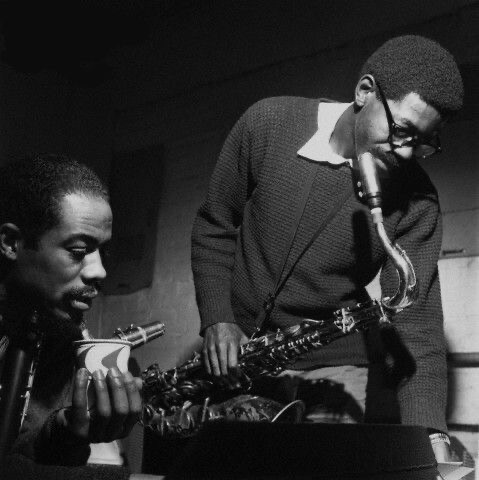Dive into the Power & Passion of ‘Tenor Madness
In the vast panorama of jazz, Sonny Rollins’ “Tenor…
Today, we celebrate the life and achievements of the tenor saxophone maestro, Joe Henderson. In a career spanning four decades, Henderson left an indelible mark on the world of jazz. On this special day, we’ll walk through his journey, highlighting his triumphs and incredible music.

Joe Henderson was born in Lima, Ohio, in 1937, into a musically inclined family. Early on, he developed a passion for jazz, admiring the artistry of Charlie Parker, Lester Young, and Ben Webster. Henderson also found inspiration in classical music, with the likes of Bartok and Stravinsky contributing to his musical palette.

Henderson’s journey into professional musicianship began at Kentucky State College and Wayne State University in Detroit. He soon shared the stage with the legendary Sonny Stitt and eventually led his own band in Detroit. Henderson’s career took a detour during his military service, but he continued playing in an Army band, touring the world.
Throughout his career, Joe Henderson collaborated with a constellation of jazz stars. His discography, both as a leader and sideman, has left an enduring impact on jazz history. Two of his albums, “In ‘N Out” (1964) and “Mode for Joe” (1966), stand out as masterpieces that showcase his brilliance.
“In ‘N Out” marked Henderson’s third album as a leader. Featuring Kenny Dorham on trumpet, it’s a compelling blend of hard bop and introspective ballads. The title track’s rhythm section, with Elvin Jones on drums and McCoy Tyner on piano, evokes a Coltrane-esque feel. However, Henderson’s solo reveals his distinctive voice, rooted in deliberate construction and emotive power. The album’s intricate melodies and unyielding energy make it a cornerstone of Henderson’s career.
On “Mode for Joe,” Henderson shared the frontline with a fiery Lee Morgan on trumpet and a young Bobby Hutcherson on vibes. Curtis Fuller‘s trombone provided depth to the melodic statements. The opening track, “A Shade of Jade,” epitomizes hard bop at its finest. The ensemble’s unrivaled confidence and verve make it a treat for the ears.
“Caribbean Fire Dance” showcases Henderson and Morgan’s creative aggression. Henderson’s ability to weave in and out of the harmonic structure, while remaining firmly grounded, displays his mastery. Morgan’s solo, with its brilliant brass tone, complements the ensemble perfectly. The record’s closing track, “Free Wheelin’,” features a more structured melody, with Henderson’s solo restrained yet captivating.
By the 1990s, Henderson finally achieved the widespread recognition he deserved. After signing with Verve, he released three Grammy-winning albums: “Lush Life,” a tribute to Billy Strayhorn, “So Near, So Far,” honoring Miles Davis, and “Double Rainbow,” dedicated to Antonio Carlos Jobim. This late-career renaissance also saw Henderson claiming Down Beat magazine’s “triple crown” awards two years in a row.
Henderson’s improvisational skills and lyrical contemporary jazz style set him apart from his contemporaries. Often compared to Stan Getz, his sound was unique and instantly recognizable. His ability to connect with audiences on a deeply emotional level was a testament to his artistry.

As a composer, Joe Henderson’s work is equally remarkable. Notable compositions include “Recordame,” “Black Narcissus,” “Inner Urge,” “Isotope,” “The Bad Game,” and “Caribbean Fire Dance.” These works continue to inspire and challenge musicians today, solidifying his impact on jazz.
Henderson’s personal life took him to San Francisco, where he taught music and continued to perform. His passion for teaching and sharing his knowledge reflected his love for the art form. Despite the health challenges he faced later in life, which ultimately brought an end to his public performances, Henderson’s spirit remained unbroken.
Joe Henderson passed away in 2001, but his legacy lives on through his music and the countless musicians he inspired. As we celebrate his birthday, we’re reminded of the incredible impact he made on the world of jazz. His artistry, innovation, and unwavering dedication to his craft make him a true legend.
In honoring Joe Henderson’s life and work, we must also recognize the importance of preserving and promoting jazz as a vital art form. It’s crucial for future generations to discover the magic of Joe Henderson and other jazz greats. Through our appreciation and support of jazz, we keep their legacies alive and thriving.
As we raise a toast to the memory of Joe Henderson, let us rekindle our love for the music he created. We celebrate his life by listening to his timeless records and sharing them with others. By doing so, we ensure that the spirit of Joe Henderson and the jazz tradition he so passionately embodied continues to inspire and enrich the lives of many.
In closing, we remember Joe Henderson for his immense talent, his musical contributions, and his unwavering passion for jazz. Today, on his birthday, we celebrate a man who left an indelible mark on the world of music. Let us honor his legacy by continuing to enjoy and share the gift of his artistry for years to come.